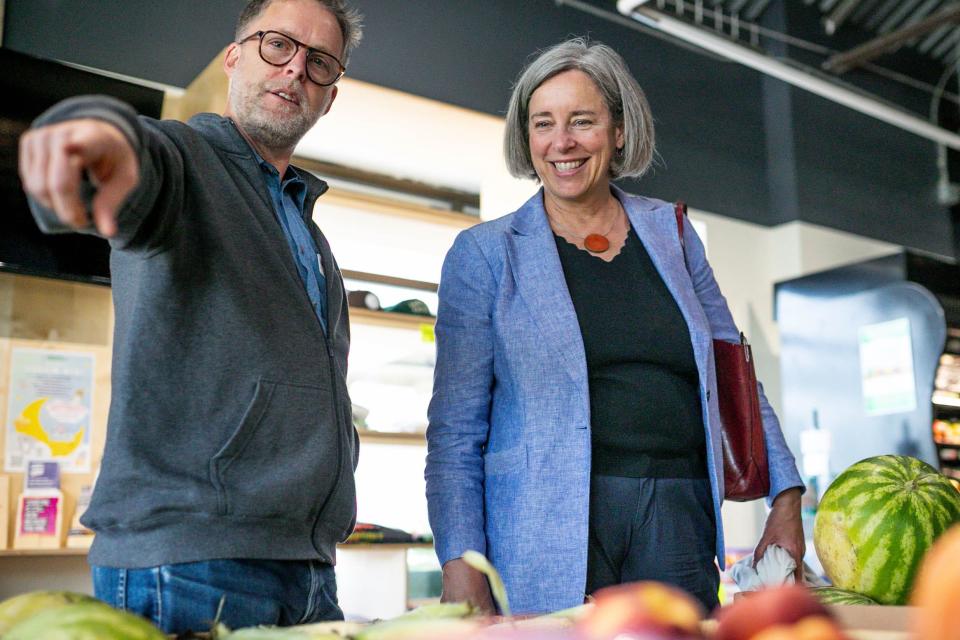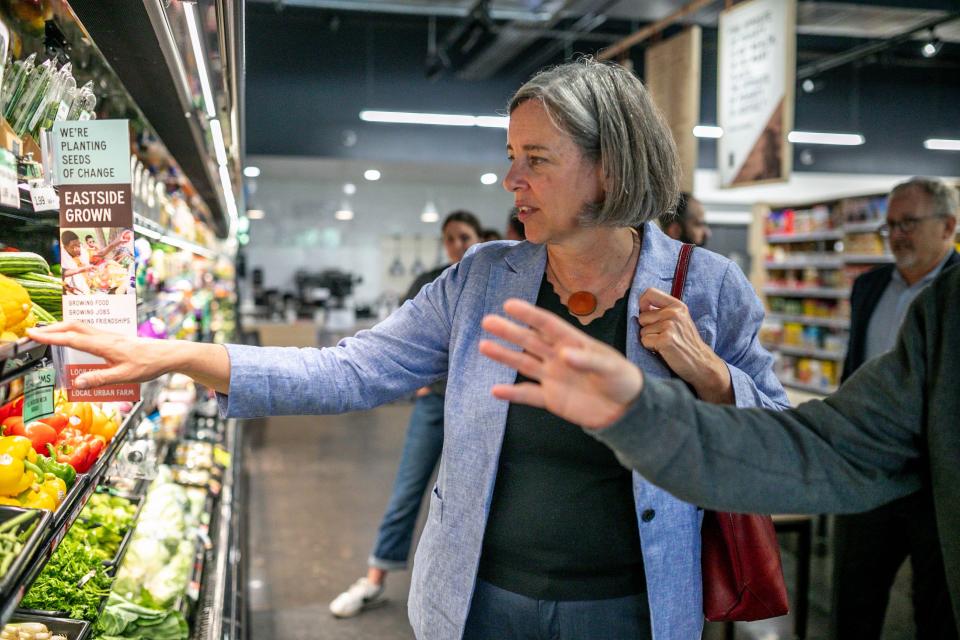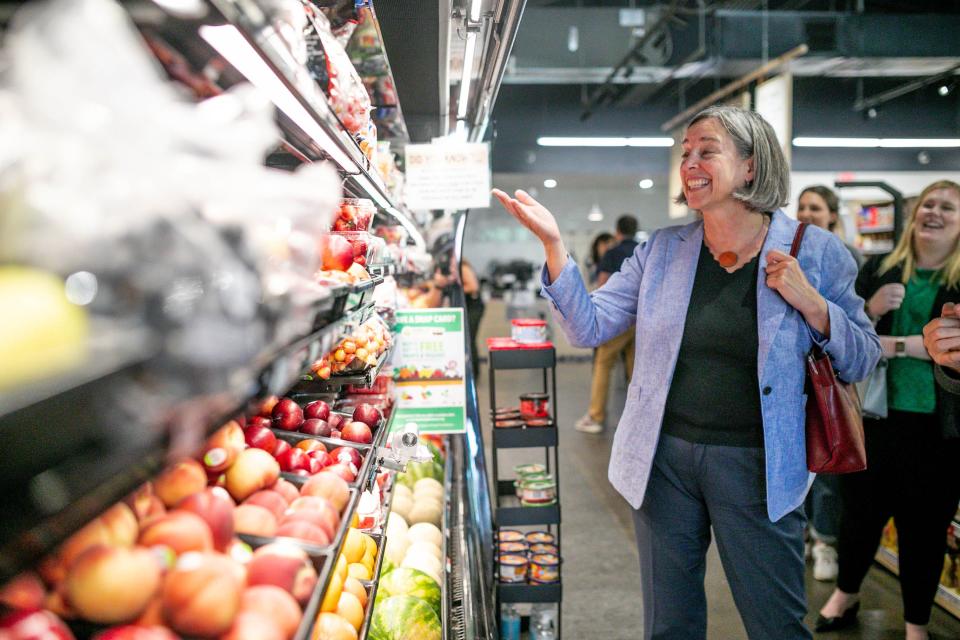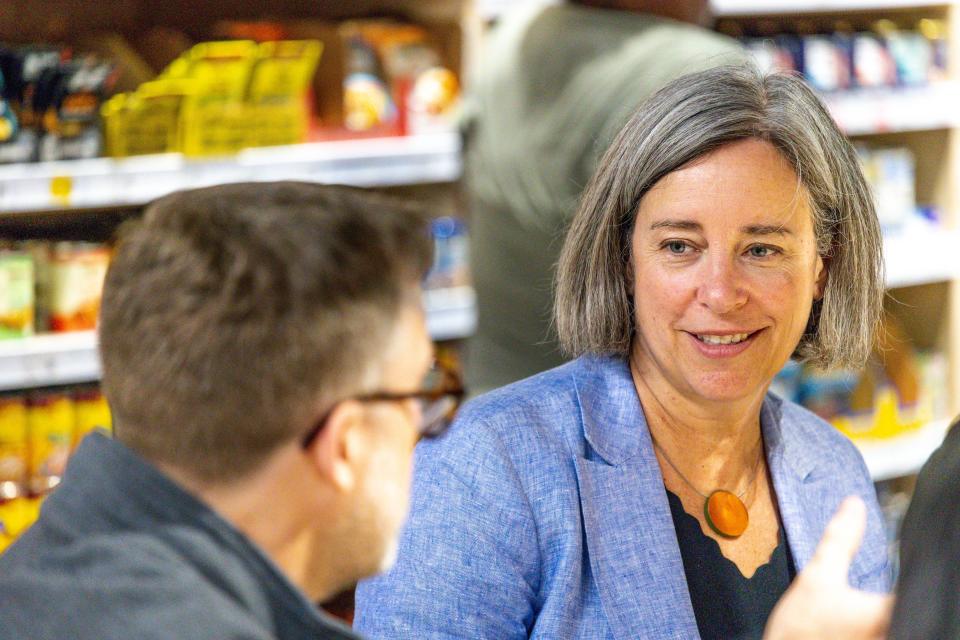USDA official praises OKC project to encourage healthy eating
Stacy Dean, the deputy under secretary for the U.S. Department of Agriculture, strolled through the aisle of a northeast Oklahoma City grocery store Thursday, looking over a multicolor display of watermelon, squash and eggplant, items that were nearly impossible to buy in this neighborhood just a few years ago.
Since opening in 2021, The Market at EastPoint, operated by the nonprofit Restore OKC, has become an oasis in this proclaimed food desert where many shoppers use the Supplemental Nutrition Assistance Program, also called SNAP or food stamps.
But a federal grant has boosted the store's sales of fruits and vegetables.
“The federal government does a lot; we have 16 federal nutrition programs," Dean said. "But we also need state and local governments, along with local nonprofits, to step in where they see the system isn't working, and this grocery store ... and the Double Up Oklahoma program is a great example of that.”

Double Up Oklahoma, launched in 2019 by the Tulsa-based nonprofit Hunger Free Oklahoma, allows SNAP users to double the value of their assistance to buy fresh fruits and vegetables.
Every dollar a person spends in SNAP benefits — up to $20 a visit — they receive $1 back to purchase produce.
For example, if a family went to The Market at EastPoint, or another eligible store, and spent $18 on eggs, cereal, bread and chicken breasts, they would receive an $18 coupon to spend on broccoli, bananas, apples or other produce.
Double Up Oklahoma began in just a few locations but has expanded over the last year to 23 farmers markets, 12 grocery stores and one mobile delivery grocery service after receiving a $14.2 million USDA grant.
“Because of the purchasing power of Double Up, we are seeing grocery stores stock more produce, and we are also seeing people actually try new things because now they have the money to spend,” said Leslie Young, the senior program manager for Double Up Oklahoma.

Dean, the USDA deputy under secretary, visited The Market at EastPoint on Thursday to learn more about the program, which has served more than 10,000 people at the northeast Oklahoma City grocery store and 83,000 statewide.
“It’s just incredible that you are doing this,” Dean told grocery store and Hunger Free Oklahoma officials as she toured the store.
Oklahoma ranks No. 2 in the nation for hunger

Double Up Oklahoma aims to reduce hunger and increase access to healthy food options in a state with one of the nation's highest rates of food insecurity.
Trailing only Mississippi, 19.4% of Oklahomans live in a household where there isn’t enough to eat, according to this month’s U.S. Census Household Pulse Survey. The national average is 12.1%.
Officials said the program is especially important following a recent reduction in SNAP benefits. A pandemic-era increase in benefits ended earlier this year, cutting Oklahoma’s funding by nearly $50 million a month, according to the Oklahoma Department of Human Services.
The temporary increase pushed the average daily benefit from $4 to more than $7. But even though the pandemic emergency has ended, food prices are significantly higher than they were before.
"The Double Up incentives are tied to SNAP benefits, so we have seen it go down slightly (because of the cuts)," said Young, who works with Hunger Free Oklahoma. "However, the redemptions are going up and people are using those coupons now more than ever."
EastPoint grocery store a response to ‘food desert’

Managed by the nonprofit RestoreOKC, in partnership with Homeland, The Market at EastPoint is a 6,800-square-foot grocery store called a lifeline for many in this mostly Black community that has long been left out of the city’s recent revitalization efforts.
More: Ministry leader dreamed with community to make northeast Oklahoma City market a reality
Marc Jones, director of foods for RestoreOKC, told Dean that produce accounts for around 25% of all sales at the grocery store, compared to an industry average of around 9%.
"That's because of Double Up," Jones said.
This article originally appeared on Oklahoman: USDA visits OKC grocery store, learns about Double Up Oklahoma

